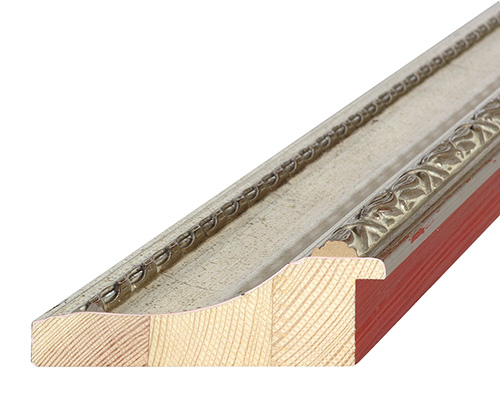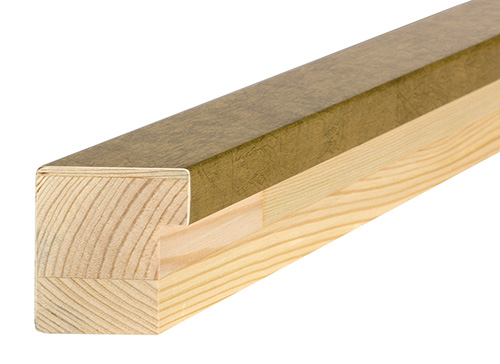In the field of picture frames, the "finger joint" and the "lamellar wood" have become increasingly popular. Let's see why ...
This method consists in joining several small pieces of wood to obtain long mouldings.

Exemple of finger joint
The advantages are:
• Knotty parts of wood, resin bags and other defective parts are discarded.
• Some parts of the wood are also used that would otherwise have to be rejected as, for example, pieces that are too short.
• Uniform mouldings of 3 meters are obtained without the limits deriving from the size of the tree.
• The mouldings obtained in this way are more rigid and do not show the distortions that are sometimes noticed on "normal" moldings.
The disadvantages are:
• The joint appears visible in some types of finish.
• Problems may occur when the wedges used to assemble the frame are stuck right into the joint.
• If the joint is not well made, the pieces may come off.
The "finger joint" method is used above all for pine and fir.
Lamellar wood is produced by gluing wooden strips together.
At first the strips are obtained from the trunk, generally not more than 20 mm wide to prevent excessive deformations caused by the phenomenon of shrinkage.
Then the strips undergo a treatment to obtain stabilization in the hygrometric content. In other words, their degree of humidity is unified.
Finally thee strips are attached to each other by hot gluing and under pressure. They are positioned between them with opposing grain so as to ensure greater uniformity in the strength of the beam.
Lamellar wood is therefore a composite material, consisting essentially of natural wood, of which it maintains its qualities. But it is also a new product, produced on an industrial scale that, through a technological process of pressure bonding, reduces the defects of solid wood.
It is possible to produce elements of desired shape and size, without the limits deriving from the size of the tree. In this way you can obtain mouldings with a uniform length of 3 meters.
Even if they are made of a combustible material, the lamellar wood structures can have a fire resistance equal to that of steel structures. In fact, in the lamellar wood the combustion takes place slowly thanks to the good thermal insulation produced by the carbonized surface layer.
The advantages and disadvantages are the same ones seen for the “finger joint”.
Both the "finger joint" and "lamellar wood" systems are increasingly used in the field of picture frames.

|

|
Mouldings realized by "lamellar wood" system